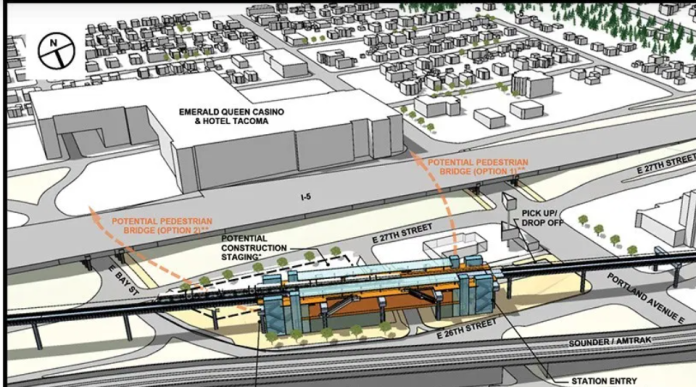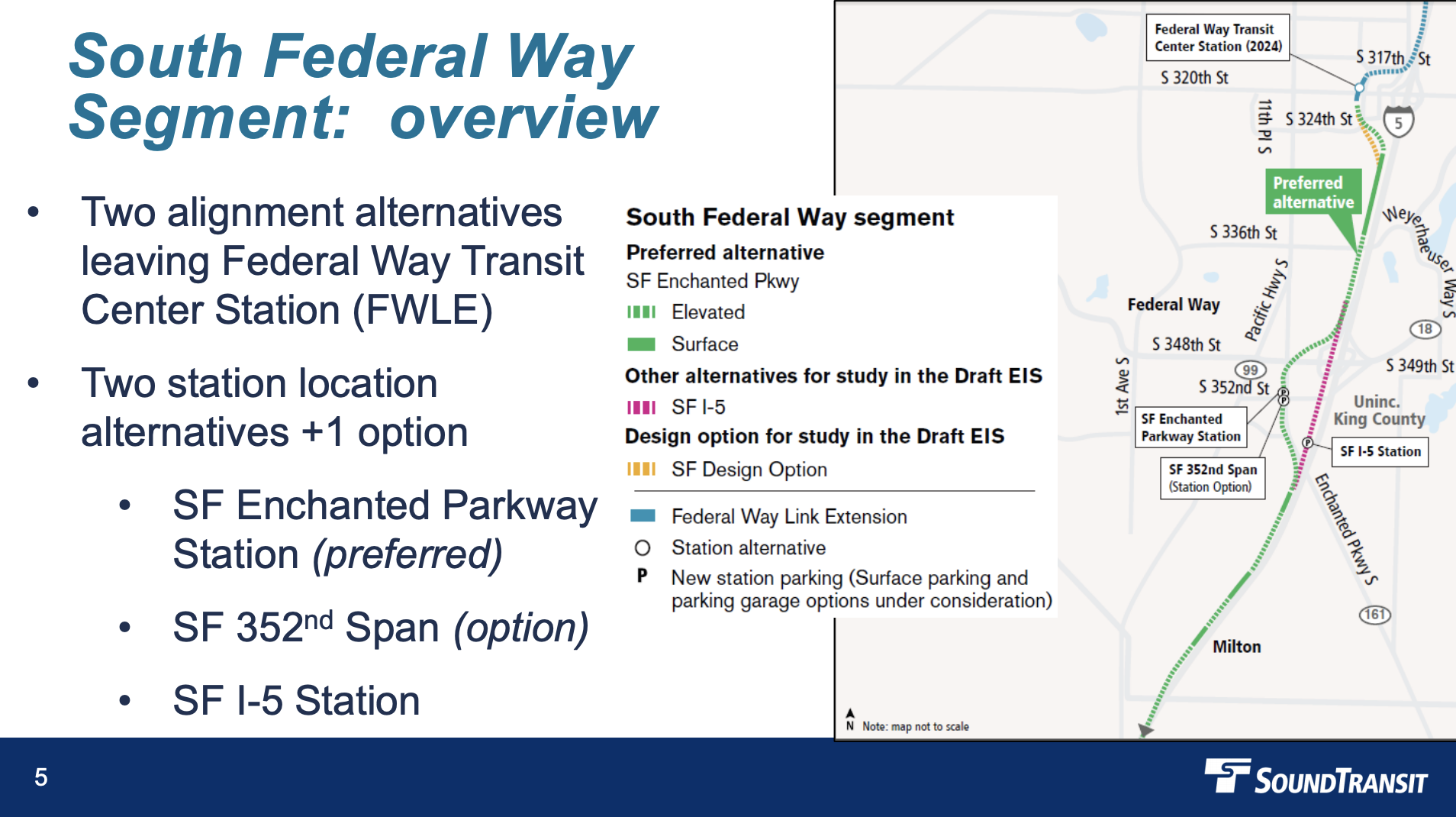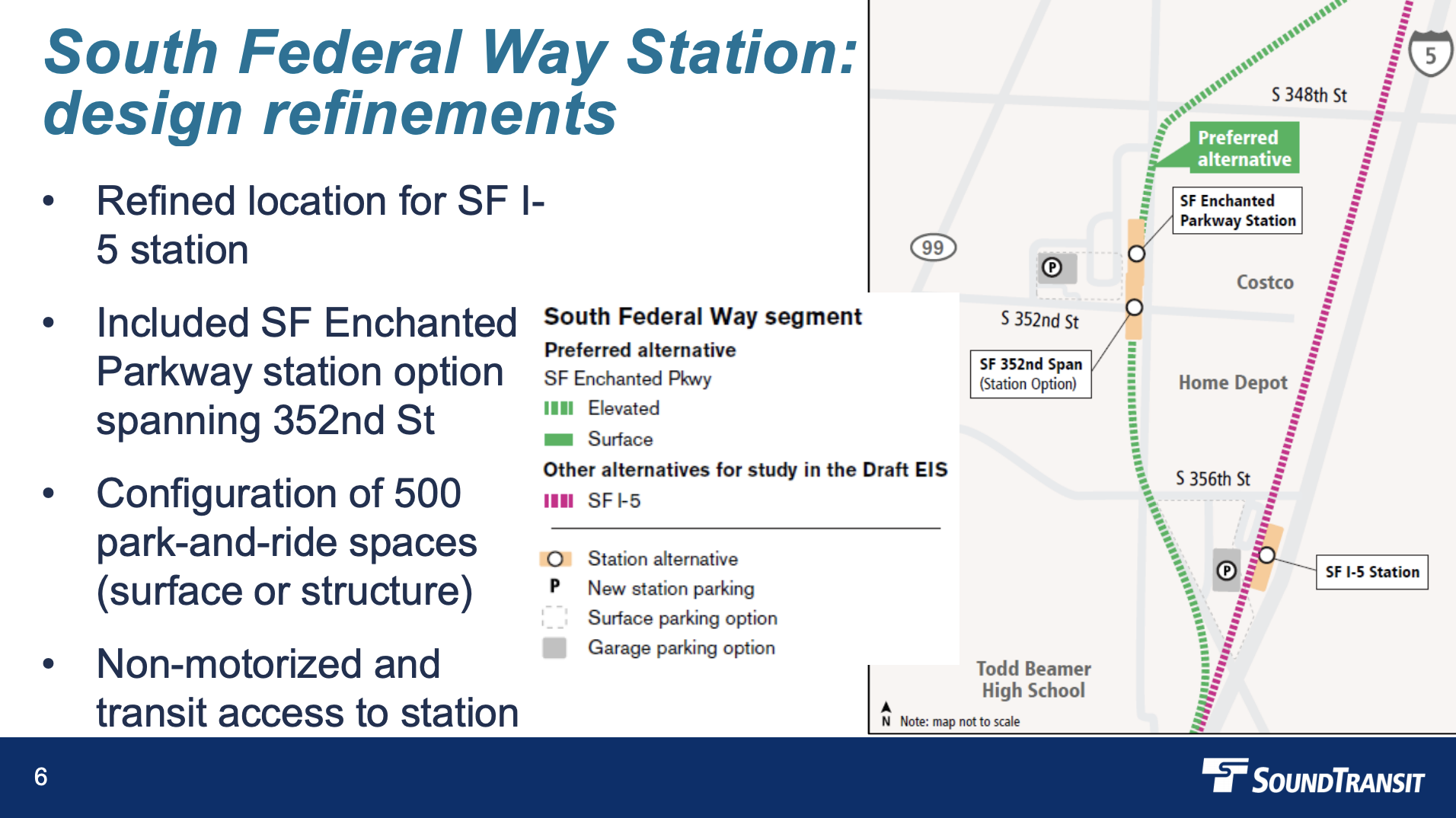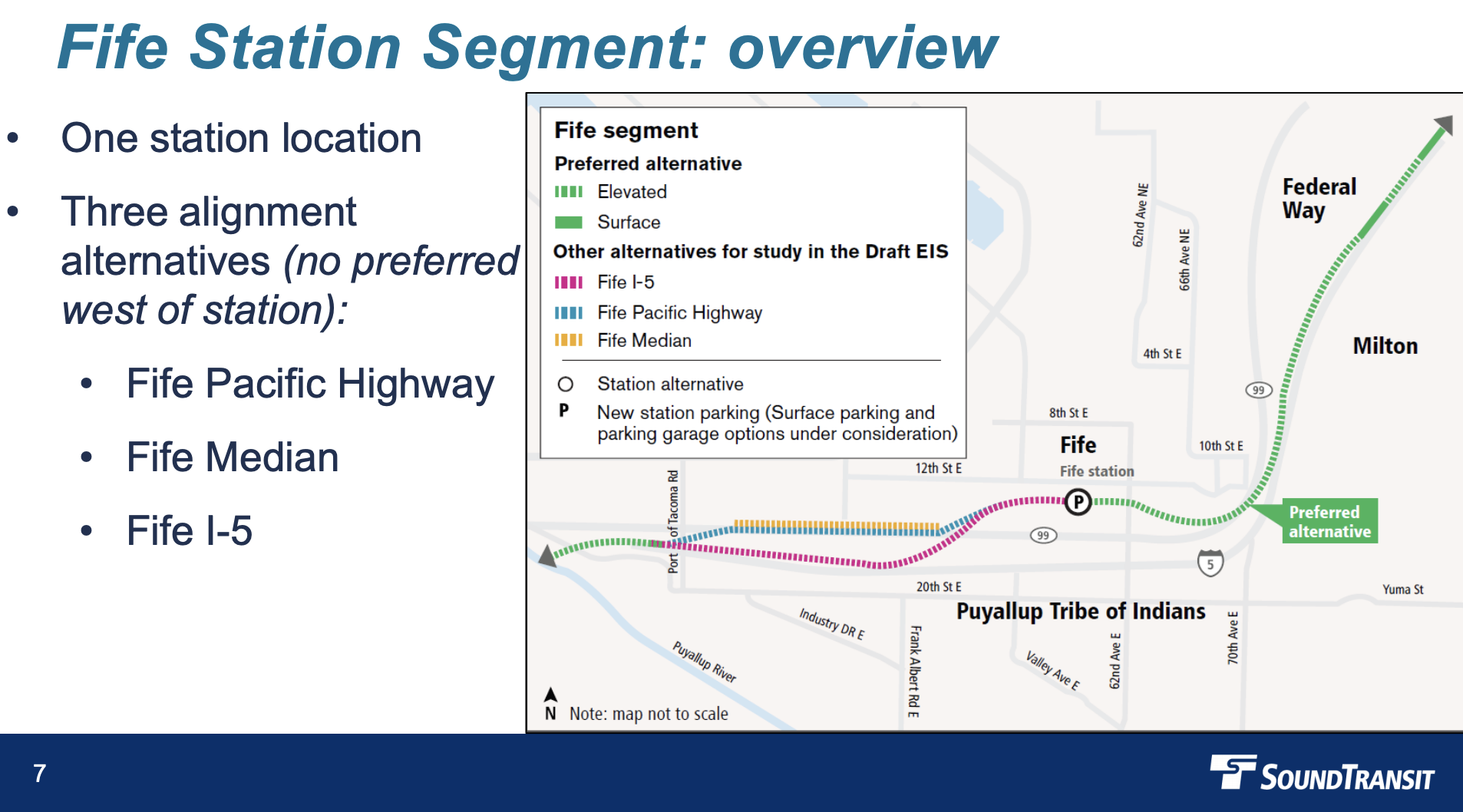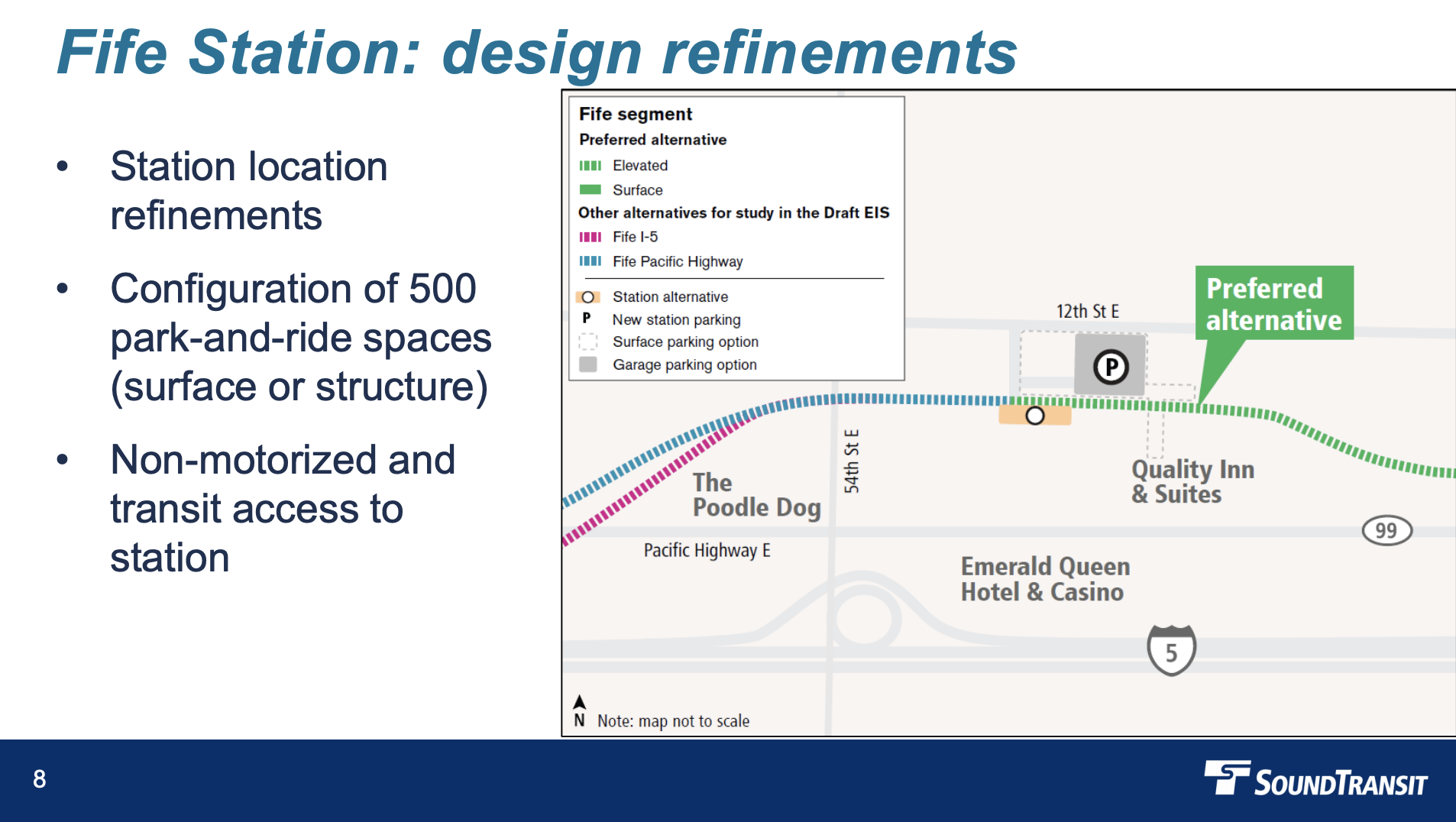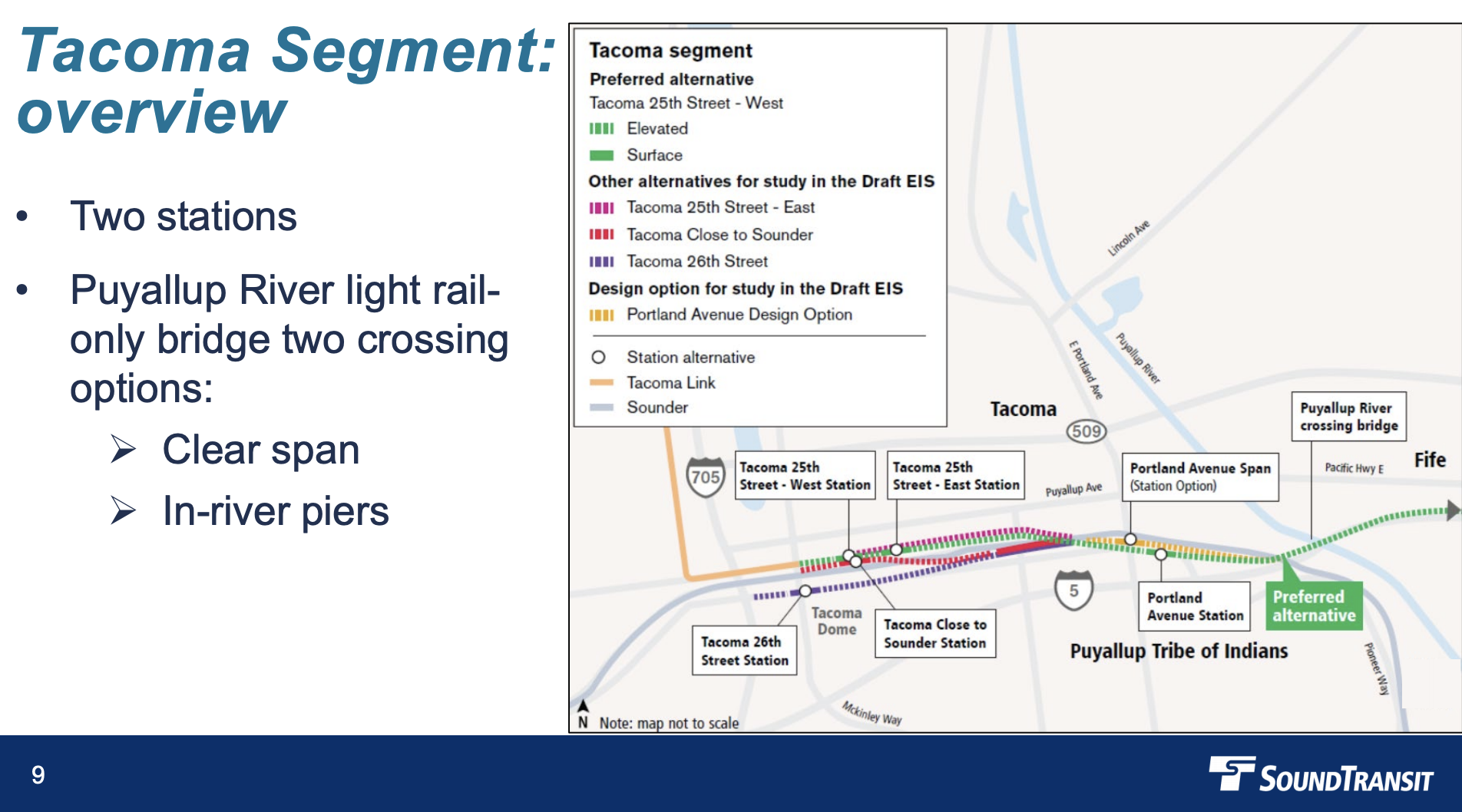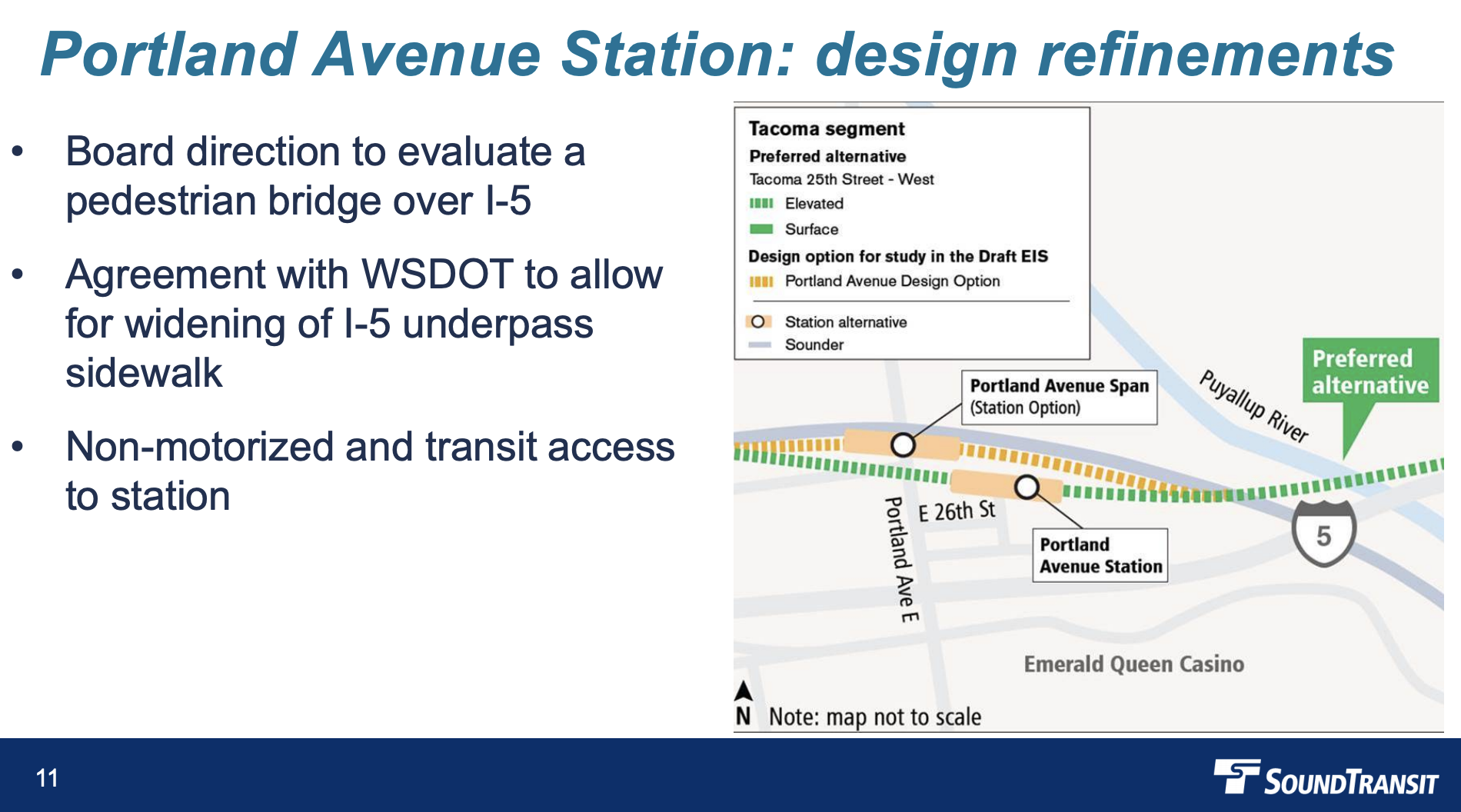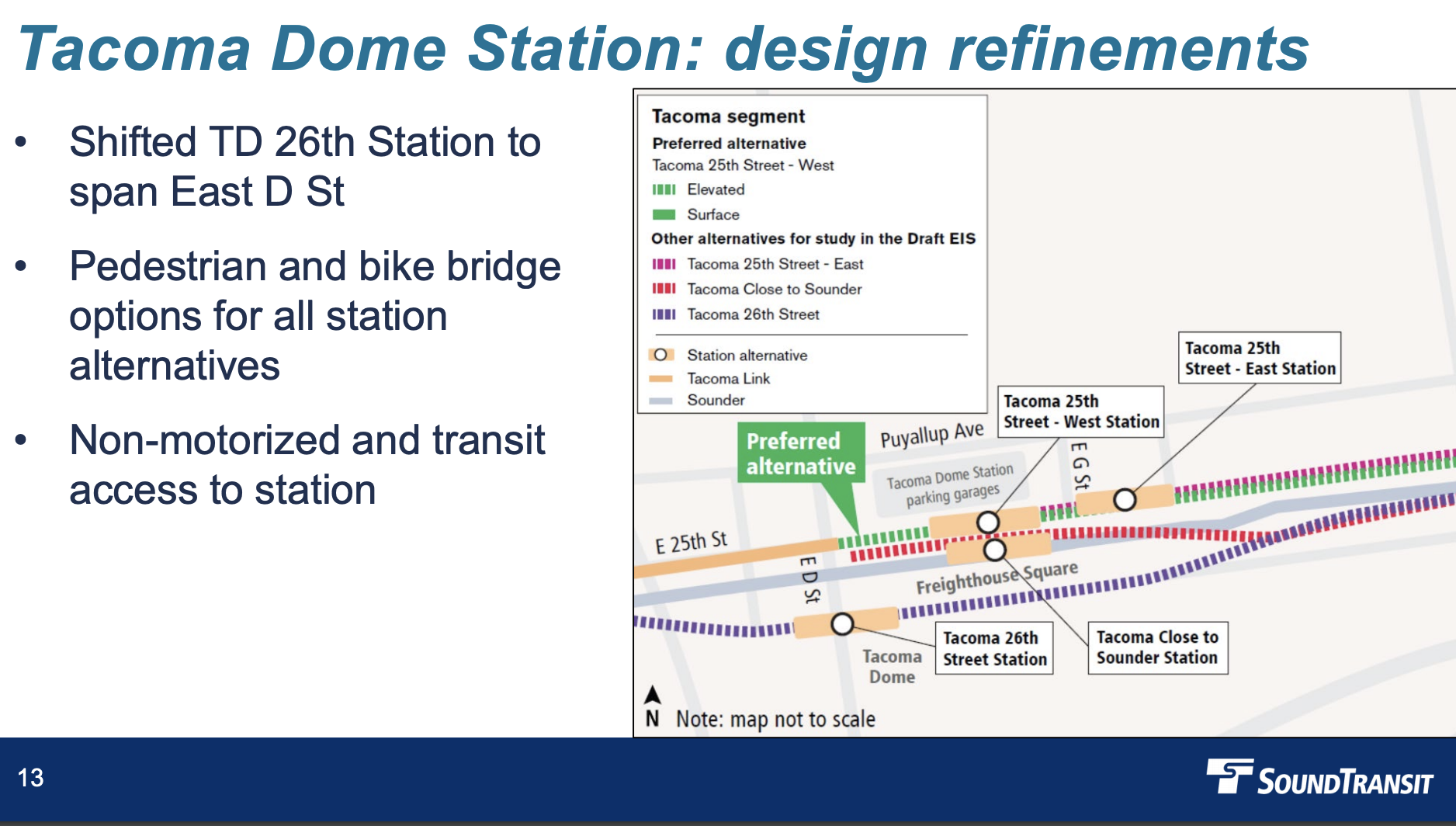Sound Transit is working on the Tacoma Dome Link Extension (TDLE) program–a four-station light rail extension south of central Federal Way–to determine a preferred set of station locations and alignments. Several project refinements were released last week in a presentation to the Sound Transit board of directors, which largely focused on station design changes, some of which were previewed in the fall.
Last summer, Sound Transit’s board of directors chose which alignment and station alternatives that would be incorporated into the state and federal environmental impact statement (EIS) process, including an early preferred alternative. Then in the fall, Sound Transit released initial station area rendering concepts for public feedback. Through the EIS process, further analysis of alternatives could result in a modified preferred alternative and inform decisions about how to accommodate stations and alignments in Federal Way, Fife, and Tacoma.
Building upon the Federal Way Link Extension slated to open in 2024, TDLE will offer 35-minute train trips to SeaTac Airport from its Tacoma Dome terminus and add between 27,000 and 37,000 daily riders to the light rail network, Sound Transit projects.
The project refinements affect stations in all four segments of the light rail extension.
South Federal Way
For the South Federal Way segment, Sound Transit is evaluating three general alignments with three possible station locations. The board of directors has initially identified the Enchanted Parkway Station location as the preferred station location. That station would be elevated on the west side of Enchanted Pkwy S, just north of S 352nd St. As an alternative to this, Sound Transit is actively looking at a station that would span St 352nd St in approximately the same location. The I-5 location could be slightly modified, largely located on in the triangle area near I-5 and Enchanted Pkwy S with elevated platforms.
Fife
For Fife, the board of directors were very direct with one station location for consideration. The station is planned between 12th St E and SR-99, just west of 62nd Ave E. However, there are three alignment alternatives under review west of the station location. Sound Transit is mostly evaluating where and how to configure the large parking garage at the station, though there is consideration of putting a non-motorized multi-use pathway under the elevated guideway and station. That pathway, however, is not currently funded as part of the program.
Tacoma’s Two Stations
The Tacoma segment has two planned station areas: one near the Tacoma Dome and Tacoma Station and another near Portland Avenue. To reach the area from Fife, the light rail alignment will need to cross the Puyallup River. Sound Transit is considering two river crossing options, including a long-span bridge (approximately 560 feet) with no in-water impacts and a traditional piered bridge (two in-water piers and three spans). Whichever bridge is chosen, the transit agency plans to seek use of the old I-5 bridge crossing footprint that will be demolished as part of the I-5 widening and realignment project.
The preferred Portland Avenue station location would be elevated just east of Portland Ave E and north of E 26th St. An alternative station location is under consideration just north and west of the location that would span Portland Ave E. Sound Transit is looking at an option to provide better pedestrian access to the station via a pedestrian bridge over I-5. There is no funding attached to this project element yet, but it is an option that could be included if deemed valuable and an access priority. Separately, the transit agency is working with the state’s transportation department to allow future widening of pedestrian facilities under I-5.
The Tacoma Dome Station segment includes two divergent alignment options with the preferred alternative leading to an elevated station situated on E 25th St between D St and G St. The station would be hemmed in by the Tacoma Dome Sounder station and parking garage/transit center. The station refinements identified by Sound Transit include a possible pedestrian and bike bridge over the Sounder and Amtrak railways, a pedestrian and bike bridge connecting the Tacoma Dome parking garage, and adjustment of the E 26th St station location eastward to span D St.
The Draft EIS (DEIS) for the TDLE is still on track for publishing in Spring 2021 and would then be followed by the Final EIS (FEIS) in Summer 2022. The 10-mile light rail corridor is billed to open by 2030, but the economic downturn from the pandemic could wind up setting that back, agency staff has warned. There is hope that additional federal and state funding could come through in the years ahead to keep things on track, and completing the EIS process on-time would ensure that the project is shovel-ready. In the meantime, Sound Transit will continue with the EIS process, including digital public outreach during the pandemic.
Update: Sound Transit is hosting an online survey on the station concepts through November 2nd.
Stephen is a professional urban planner in Puget Sound with a passion for sustainable, livable, and diverse cities. He is especially interested in how policies, regulations, and programs can promote positive outcomes for communities. With stints in great cities like Bellingham and Cork, Stephen currently lives in Seattle. He primarily covers land use and transportation issues and has been with The Urbanist since 2014.

